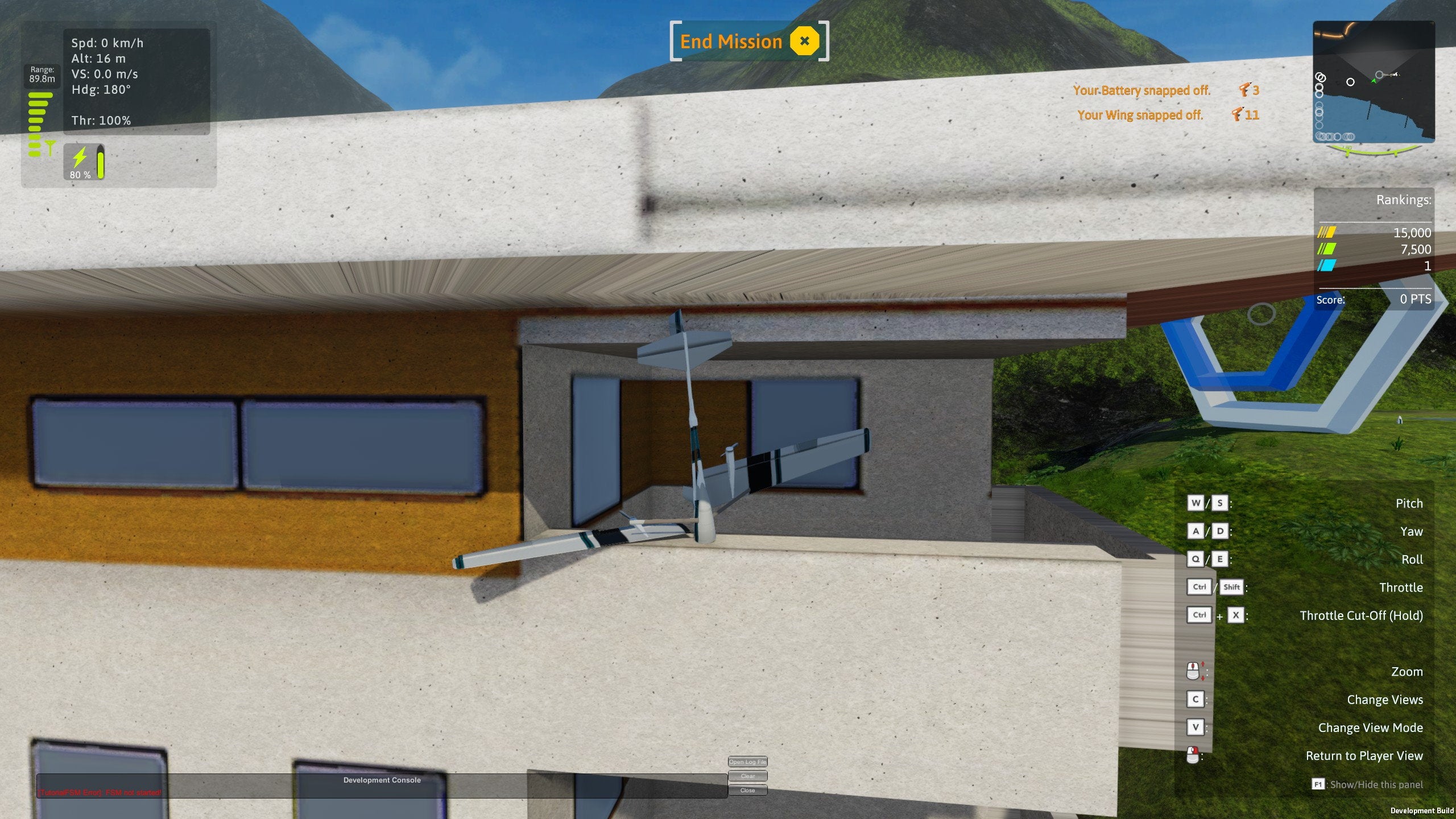Designed by Kerbal Space Program creator Felipe Falanghe, it’s everything you’d expect from the man: a modular, mod-ready tool for unconstrained air vehicle creation and a sandbox for physics-enabled flight, delivered with a disarmingly gentle tone that finds comedy in the most disastrous crash. Not that you would necessarily expect an early access indie project from one of the most successful designers in PC games. When Falanghe walked away from Kerbal studio Squad in 2016, I expected - as Falanghe did - that he would be able to walk through the front doors of an established studio and be showered with cash. After all, Kerbal itself is now the jewel in the crown of Take-Two publishing label Private Division, fast tracked for a sequel. Surely the instigator of that hit franchise would be wooed by a rival big name? Not so. “I left with a massive amount of confidence, thinking I’m going to make my other dream game,” Falanghe says. “It was going to start big and have a large team. That never happened. Maybe I’m not the best salesman, I don’t know.” Falanghe lost a year to investors who strung him along rather than say no. Only when he gave up on pitching and started building on his own did things get moving again. He raised funding to hire an artist, Drake Kazmierczak, who produced the graphics and textures behind the calming Pacific playground that acts as Balsa Model Flight Sim’s backdrop. And now Falanghe is happily working alongside his brother - the same with whom he built model aeroplanes and spaceships in his youth, fashioning tin foil people to sit in the cockpits: the original kerbals. Happily is the key word. Falanghe’s year in pitch limbo was painful, but ultimately led to a low pressure working environment - the polar opposite of the one he felt compelled to leave in 2016. “Objectively, it’s much better,” he says. Though self-doubt still creeps in. “I hover back and forth with feeling, ‘This is great, I can do my game with no pressure now’, while at the same time feeling, ‘Oh no, this is nowhere near as good as KSP’. That’s my own brain’s fault I guess.” Kerbal Space Program wasn’t launched the way it is now, of course. Like any space program, it was the result of many failures on the pad - some embarrassing, some spectacular, all necessary. “My way of doing things is to tinker, try, fail, go back, revise, try again,” Falanghe says. “For Balsa it’s been like that. I guess I do things in a Kerbal way - sometimes they do explode, even.” Perhaps it should be no surprise that Balsa Model Flight Sim is played in the same fashion. As a member of an RC Club situated in the harbour of a picturesque Australian town named Wirraway Bay, you assemble aircraft from pieces on the table of your corrugated workshop - snapping noses onto fuselages and angling wings just so in pursuit of perfect balance. Then, in Career Mode, you take that plane (or a prebuilt one, if you prefer) and walk out onto the runway to meet your mates at the Club. These limbless pals hover above the ground like benevolent poltergeists, offering missions that satisfy their particular taste in hobby flight. The blue-haired and aerodynamically pointy Amelia handles, well, handling - expert stunt manoeuvres. Chuck, who sports wraparound shades, a teardrop-shaped abdomen and no-worries belly, is all about the paintball-grade combat Balsa Model Flight Sim offers. Cid will reward you for discovering and completing secret challenges around the map. And so on, these chums providing the XP, cash and part unlocks to feed the loop some will need to structure their experiments in the Bay. “An RC Club is the only conceivable way you could possibly make money with RC planes,” Falanghe says. “It’s not as if people would pay you to fly them in real life. If you know of anybody, let me know please.” The flying itself is charmingly manual, as you wind back your arm to throw the plane in first-person. Once it’s in the air, your view snaps to the vehicle, where you wrestle pitch, yaw, roll and throttle to fly through hoops or simply land again without splintering your creation. I don’t get the sense that Falanghe is one of those players who requires structure. Instead, his eyes light up when he talks about self-set goals: the open-ended vehicle construction that will ultimately allow for helicopters and drones; the scenario editor for custom missions; the modding SDK that mimics his own tools. “The idea is to make the game as flexible and as much of a platform as possible for people to build their ideas on top,” he says. “That to me is what early access is about: inviting the community to design the game with you.” If Falanaghe’s dream sounds like a project without a clear voice, fear not: Balsa Model Flight Sim is designed to have a distinct, “chilled” vibe that’s already apparent in the current build. This despite the fact that Falanaghe’s sole real-life experience with drone ownership ended in catastrophe when the machine disconnected in mid-air. “The wind picked it up and pushed it away from me,” he says. “It hit the only obstacle in a 500 metre radius, and fell into the only water available. “The adrenaline rush of flying that thing you’ve put hours of work into and not knowing if it’s gonna crash or not is all but relaxing, actually. Hopefully the game is able to convey some of that as well, without the consequence of having to wade into an irrigation ditch.”



